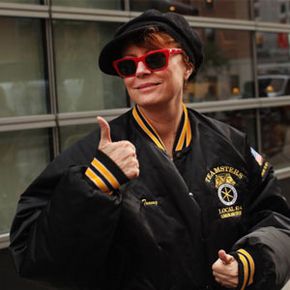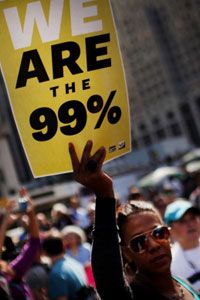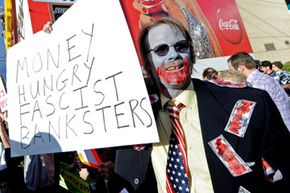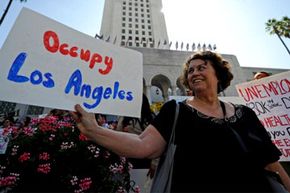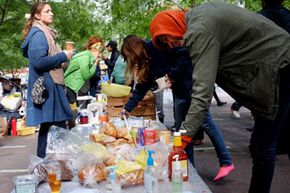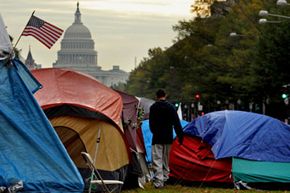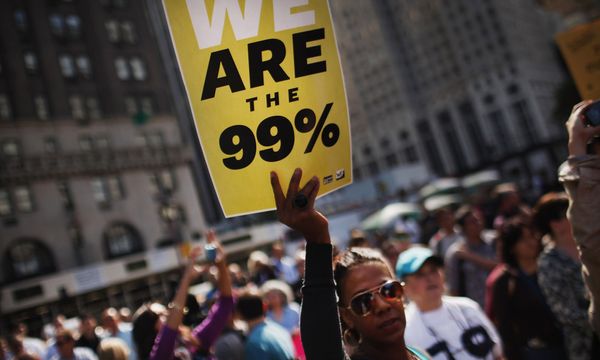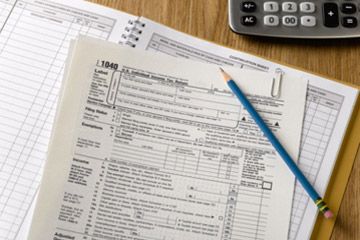Officially, the Occupy Wall Street movement began on Sept. 17, 2011 in the streets of Lower Manhattan's Financial District. But Egyptians who flooded Cairo's Tahrir Square, demanding the ouster of the dictatorial President Hosni Mubarak, provoked interest in a U.S. public uprising months earlier. On Feb. 2, 2011, while Mubarak clung to his final shreds of power, Adbusters staff writer Kono Matsu wrote an editorial blog post on the Web site of the Canadian anti-consumerist magazine, urging Americans to take a cue from Cairo [source: Weigel and Hepler]. Frustrated with the arguably toothless governmental response to financial organizations and corporations -- which many hold partly responsible for the U.S. economic recession and resulting high unemployment rate -- Matsu encouraged the politically radical readership to organize a "Million Man March on Wall Street" [source: Matsu].
Then, on July 13, after Mubarak had long since ceded government control to the Egyptian military, another Adbusters post sounded the official rallying cry with the Twitter hashtag "#OccupyWallStreet." Modeled after the social media strategies that assisted the uprisings in Tunisia and Egypt especially, the "#OccupyWallStreet" hashtag was intended to quickly spread the word that on Sept. 17, 2011, 20,000 people should "flood into Lower Manhattan, set up tents, kitchens, peaceful barricades and occupy Wall Street" [source: Adbusters]. In late August, activist hacking group Anonymous (its members known for wearing Guy Fawkes masks in public), published a video supporting the protest, and word about the burgeoning movement continued to circulate around Web sites and social media outlets.
Advertisement
Referred to both as Occupy Wall Street and the U.S. Day of Rage, the Sept. 17 protest attracted roughly 1,000 participants to Lower Manhattan. New York City police anticipating the rally barricaded off much of Wall Street, and protesters instead set up camp in Zuccotti Park (known as "Liberty Square" by activists reclaiming the financial district park's original name, "Liberty Plaza Park"), which would become the movement's home base. Media reports largely dismissed these activities as disjointed and the participants as leftist radicals. Nevertheless, in the following weeks, the determined gathering of anarchists, students, ex-hippies and hackers in Zuccotti Park gained more followers and traction. And despite criticism against Occupy Wall Street's initial lack of focus and clout, its populist slogan -- "We Are the 99 Percent" -- started to spread around the world.

